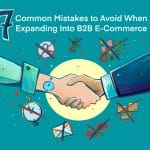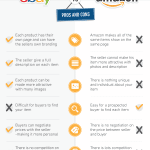
With 171 billion active buyers, eBay is a platform where you can sell almost anything, from antique paper dolls to spark plugs. However, eBay has become much more competitive in the last 22 years; it’s now too easy for new sellers to fall off the edge, never to be seen again. What’s worse, some sellers fail at eBay because they make just a few common, simple, and avoidable mistakes.
Selling Goods for Less than You Could Get On eBay
If you list an item on eBay without researching the market, you are leaving money on the table. The easiest way to determine how to price an item is to look at other completed sales. Likewise, you can get an idea of what prices are too high by looking at completed listings that ended unsuccessfully. Sometimes, sellers price their items well below market, thinking that the additional sales will compensate for the lower price.
While you very well might make a lot of sales, if the market is perfectly willing to pay $20 for an item, but you consistently price yours at $15, you are effectively losing $5 on every sale.
Not Taking Advantage of eBay’s Variation Listing Feature
eBay’s variation listing feature lets you list multiple similar items under one listing. Not only does using this feature help you to save money on listing expenses, but we find that it also provides customers with a better buying experience. It offers them a choice between various options, boosts traffic to the listing, and increases its visibility on eBay’s search results.
Not Using Buy It Now
A study by the National Bureau of Economic Research discovered in 2013 that Buy It Now listings have become the preferred type of listing on eBay. Fewer than 15 percent of eBay listings in that year were auction-only, an almost 100 percent reversal from 2003, when the overwhelming majority were auction-only.
Think about it: who wants to wait a few days to a month for an auction to end to receive a shirt? For the best performance, we recommend using Buy It Now for most types of merchandise.
When do auction listings make sense? If you are selling a used item priced well below market for a similar new item or if you have a very limited quantity of a hard-to-find item, try an auction to see if you can drive up the price that way.
Poor Product Selection
Some sellers begin selling on eBay thinking that listing lots of items is necessary to do well because doing so increases the chances that someone will buy at least one item from them per month. They focus on quantity over quality.
The better choice is to spend some time researching which items are in high demand and limit your listings to just a few of those items. Even better yet is to find high-demand items that not many other eBay sellers are offering. If you focus on obtaining just a few quality items to sell, you will make more money and have an easier time sourcing your goods.
Not Charging Enough to Cover eBay Fees
You want to be fair to your customers, which is a good thing, but when you don’t factor in the costs of listing your item, you are setting yourself up to lose money. One thing you may not realize is that eBay takes a percentage of your sales price and a percentage of the price you charge for shipping.
To avoid losses, you need to account for both of these charges before listing your item. Use eBay’s fee calculator to calculate all fees and avoid nasty surprises later.
Poor Quality or Inaccurate Photos
A recent experiment looking at the final sales prices of items on eBay found that items with ‘great’ photos sold for around 10 percent more than items with just ‘good’ photos. While the parameters for what constitutes ‘great’ photos as opposed to merely ‘good’ ones were not defined, the results indicate that taking awesome pictures of your merchandise is key to maximizing your profits on eBay.
People like to see what they are getting before clicking the buy button. Likewise, people tend to feel cheated if the item they receive is markedly different from the image in the listing. Descartes Sellercloud recommends that you avoid using stock photos and take your own pictures instead. To take good photos, ensure you have good lighting and take pictures from multiple angles.
Insufficient Titles and Descriptions
Some sellers think a listing is good enough if it includes pictures of the merchandise and a one-sentence description. Not only are they missing out on an opportunity to show why their product is superior to the many similar products available from other sellers, but they are also losing out on the additional traffic to their listings that would come if they had keyword-rich listings.
Shoppers tend to have an idea about what they want to buy before they go online. A listing that includes common terms will help buyers find your listing more easily. From our experience, descriptive product descriptions that emphasize benefits to the customer work best. Keep your sentences short and punchy, and write no more than one to two short paragraphs—one is better.
Also, make sure to include the appropriate keywords for your listing in the description and in the title. Google auto-suggest is a great resource for determining what people type into the search bar.
eBay remains a top-performing platform for many sellers. By avoiding these common mistakes we have outlined here, you can boost your eBay sales to the next level. Don’t let simple errors affect your bottom line.
Book a Descartes Sellercloud demo today.




